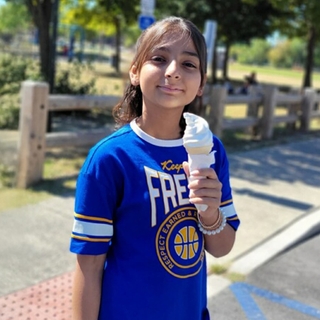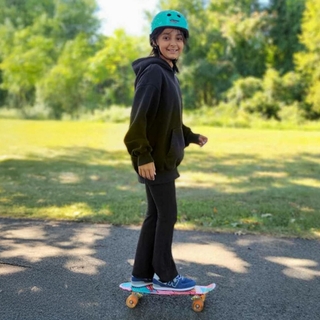Gene Therapy for Beta Thalassemia: Rahemeen’s Story
Gene Therapy for Beta Thalassemia: Rahemeen’s Story

Eleven-year-old Rahemeen loves animals. Ask her which ones, and she lists all types: “Horses, butterflies, cats, dogs, birds.” She thinks about being a zookeeper when she grows up. But she was born with a blood condition that limits her ability to be active.
“When I was 5,” she recalls, “I asked my mom a really weird question: Why do I keep going to the hospital?” Those hospital visits, which occurred every three weeks, were needed because at 2 months old she was diagnosed with beta thalassemia.
“Beta thalassemia is an inherited blood disorder where the body is unable to make enough hemoglobin,” explains Janet Kwiatkowski, MD, MSCE, Director of the Thalassemia Center at Children's Hospital of Philadelphia (CHOP). “Hemoglobin is what is inside the red blood cells and carries oxygen to all of the tissues.”
Beta thalassemia used to be fatal. Now patients are treated with blood transfusions, but the transfusions eventually cause iron to accumulate in the liver, spleen, heart and other organs. The iron build-up must be treated with medication.
“It’s quite a long day — almost a full day for us in the hospital,” Rahemeen’s mother, Zainab, says of the blood transfusions.
“I had to miss a lot of parties in school,” Rahemeen adds, “and a lot of normal activities and fun stuff.” After receiving the transfusions, she would feel healthy and energetic, but as a week or two passed, “I’ll feel really tired. A simple task, like ‘Can you put the water bottles in the fridge?’ will make me feel exhausted.” Her back and head would begin aching, and the cycle would start all over again.
Until recently, the only cure for beta thalassemia was a bone marrow transplant, using stem cells from a healthy donor whose genetic makeup matches the patient — usually a brother or sister without the disease. But the likelihood of someone finding a good enough match is very low.
A new option offered at CHOP
The family was living in Dubai when Rahemeen was born. In a search for better treatment options and a possible stem cell donor, the family traveled across the globe: Paris, Rome, Switzerland, Turkey and Korea. Then they moved to New Jersey, and finally, the family found answers at CHOP.
CHOP was a leading study site for a brand-new treatment for beta thalassemia: gene therapy. “We at CHOP have been involved in the gene therapy trials really from the start,” explains Dr. Kwiatkowski.
Gene therapy corrects the genetic problem that causes beta thalassemia. The process involves collecting stem cells from the patient and sending these cells to a lab, where a working copy of the dysfunctional gene is added to the cells. The patient then receives their own modified stem cells through an IV infusion. Because of the corrected copy of the gene, the red blood cells are able to make normal or near normal levels of hemoglobin.
After years of clinical trials conducted at CHOP and other sites, in August 2022 the gene therapy received approval from the Food and Drug Administration. CHOP was the first Qualified Treatment Center offering the treatment, called Zynteglo.
“To see a therapy like this move into being widely available for patients — this is why we do what we do,” says Timothy Olson, MD, PhD, Medical Director of CHOP’s Cellular Therapy and Transplant Section.
Hopes fulfilled

“As soon as we heard about gene therapy, my first thought was, ‘Let’s do it,’” says Zainab. But the decision to go through with it was difficult, because the gene therapy requires a patient to undergo a challenging round of chemotherapy that wipes out the existing stem cells to make room for the modified ones. The thought of chemotherapy scared Rahemeen, but eventually the family made the decision to go through with it. In April 2023, Rahemeen became the first person at CHOP to receive the FDA-approved treatment, under the care of Dr. Olson.
“Our hope for gene therapy,” Zainab says, “was for Rahemeen to live a long, healthy life without needing any more transfusions” — and, indeed, Rahemeen no longer requires blood transfusions. The therapy has transformed her life: She no longer has recurring pain, her energy level is always high, and her life is not tethered to hospital visits every three weeks.
“To see the changes in patients, how their lives have been impacted, and the kinds of things they’re looking forward to in their future is just incredible to watch,” says Dr. Kwiatkowski.
Rahemeen is excited about options she didn’t have before: “I’m going to try out for soccer! And I also have time now to go to trampoline parks and dance parties.” She sees wide-open possibilities: “You’re free to do everything now!”